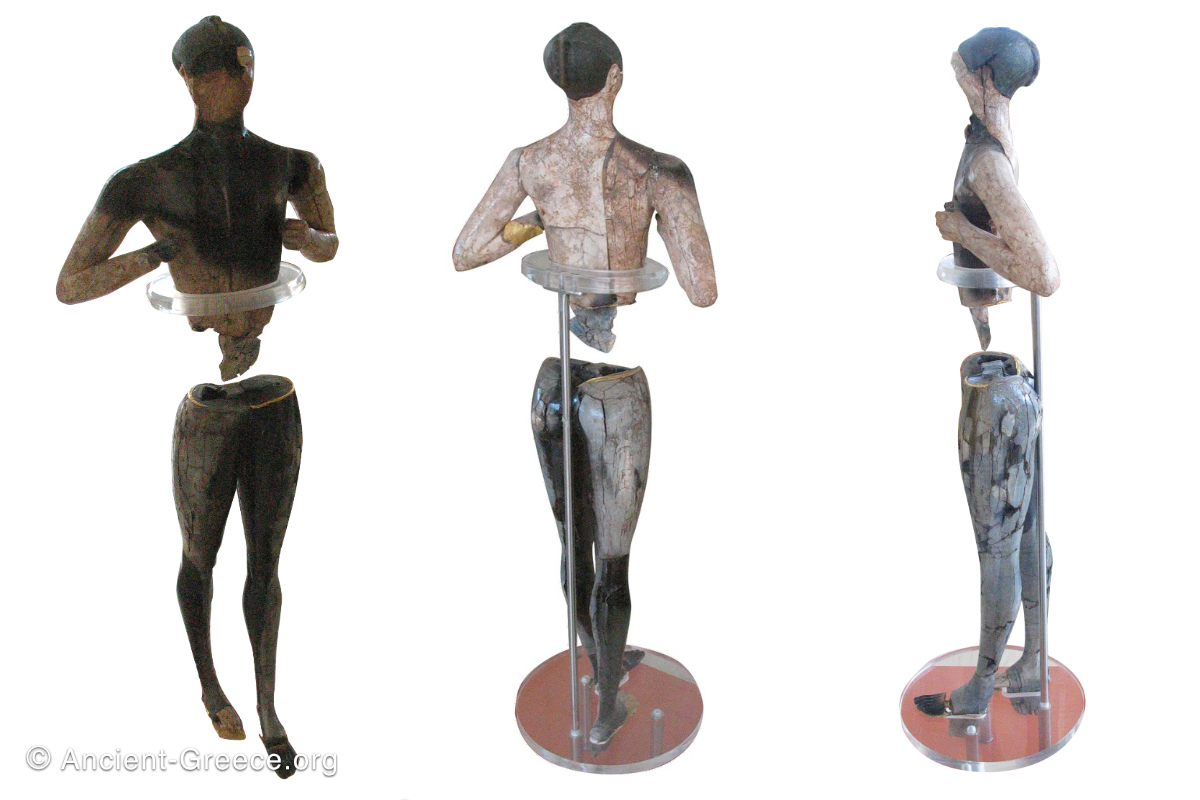
On this page:
The Archaeological Museum of Sitia (Σητεία, Siteia) houses a large number of Paleolithic, Minoan, Classical, Hellenistic, and Roman artifacts from excavations in Lasithi, Eastern Crete.
Generally, the most important ancient finds from Crete are exhibited at the Heraklion Museum in Crete, but the Archaeological Museum of Sitia exhibits a few important Minoan artifacts, including several tablets of Linear A script from the nearby palace of Kato Zakros, and the statuette known as Palaikastro Kouros, along a large number of pottery and every-day objects from eastern Crete.
Ivory Statuette (Palaikastro Kouros)
Most impressive of all the artifacts in the Archaeological Museum of Sitia is the small statuette known as “Palaikastro Kouros”.
It was found in three pieces at the Palaikastro excavations.
The statue’s body was made of hippopotamus ivory which was probably imported from Egypt.
The head was carved out of serpentine, and the eyes are made of rock crystal. Its bowels were made of wood, and its clothes made of gold leaf. The statue’s proportions fits on a the hypothetical Minoan grit of 21 units (Sacket, 23)
“This particular gesture of holding the hands to the chest is made predominantly by female bronze figurines found mainly in caves and villas. […] It has also been observed that this gesture is made by the stone and chryselephantine (ivory and gold) male figurine recently discovered at Palaikastro. The statuette is remarkable for its realism and attention to detail including minute stippling of the hair rendered in steatite and the delicate rendering of the veins and toes. The technical skill of its maker is unrivaled in the art of the Bronze Age.
Based on the interpretation of the seal figure as a divinity, Palaikastro statuette has been interpreted as a cult figure, rather than a worshipper. It has even been suggested that the statuette may have represented a youthful Zeus.” (Preziosi, Hitchcock, 144)
Linear A Tablets
Click on each image for more details.
Clay tablets with Linear A inscriptions from the Minoan palace of Zakros.
The Linear A clay tablets survived because the clay hardened during the fire which destroyed the palace . The Linear A script has not yet been deciphered, so we don’t know what the writing represents.
Minoan Artifacts from Eastern Crete
Click on each item for more details.
Pottery from Minoan and later eras of Ancient Greece, alongside gold jewelry, and other every-day objects are on exhibit.






















